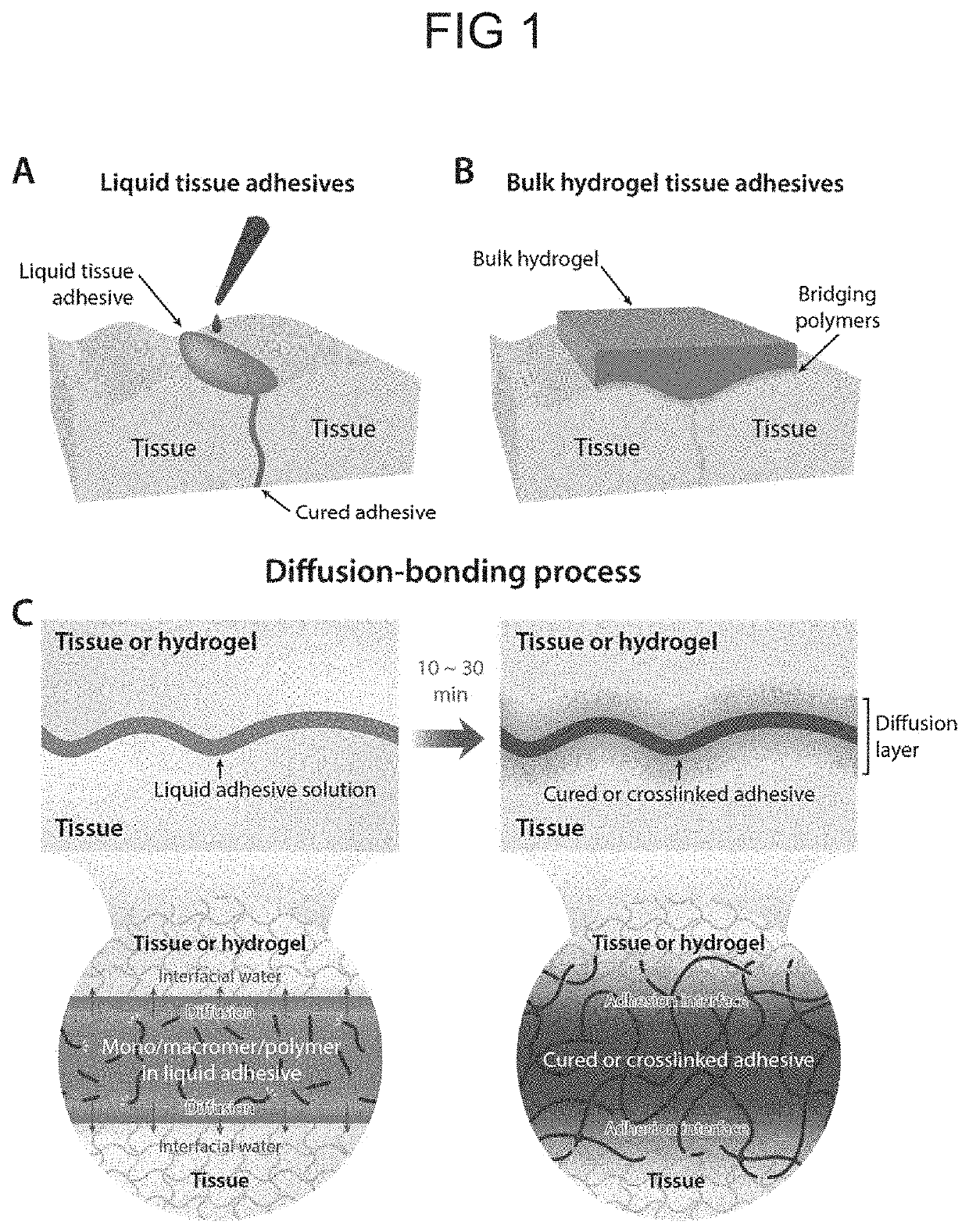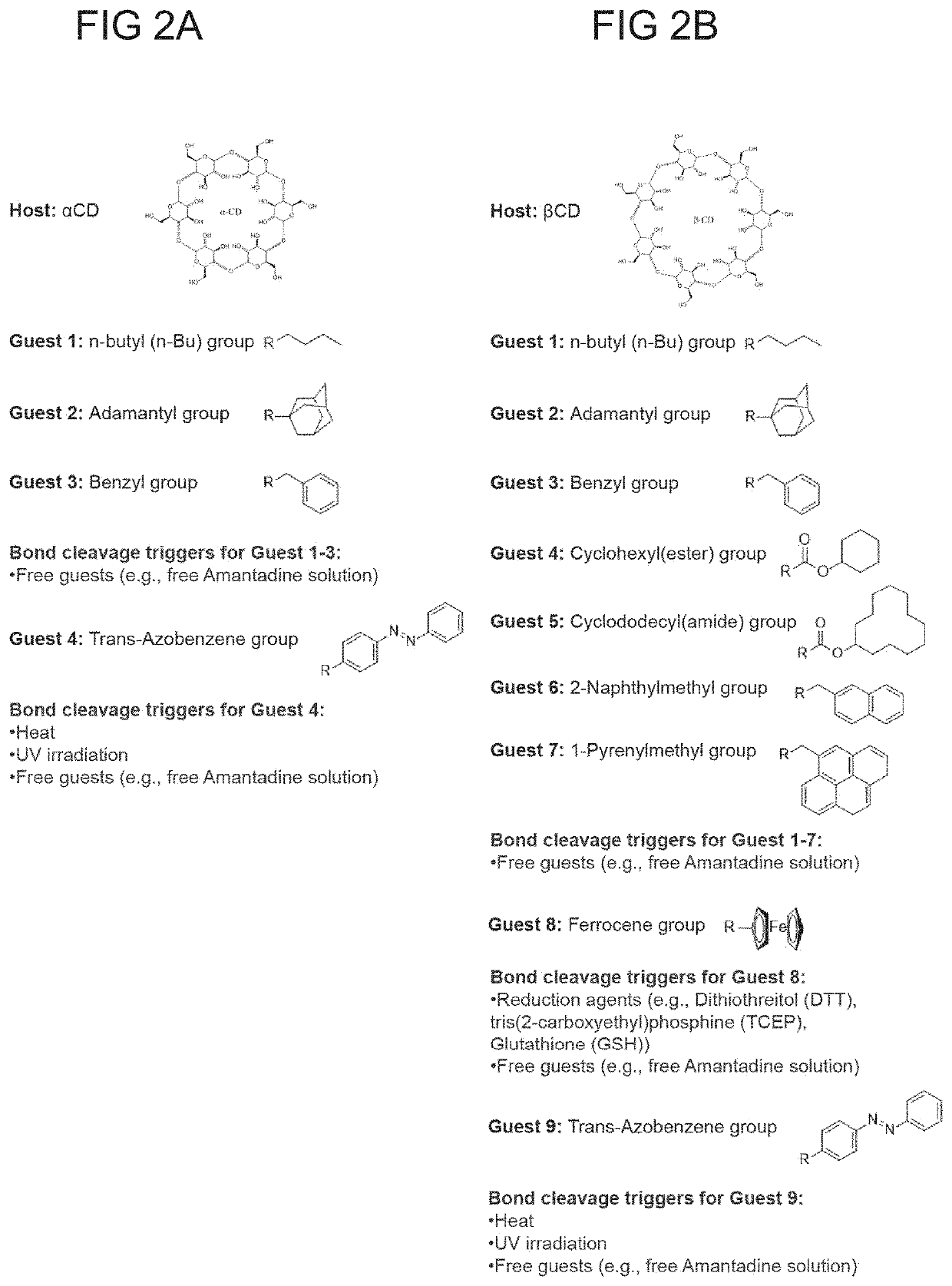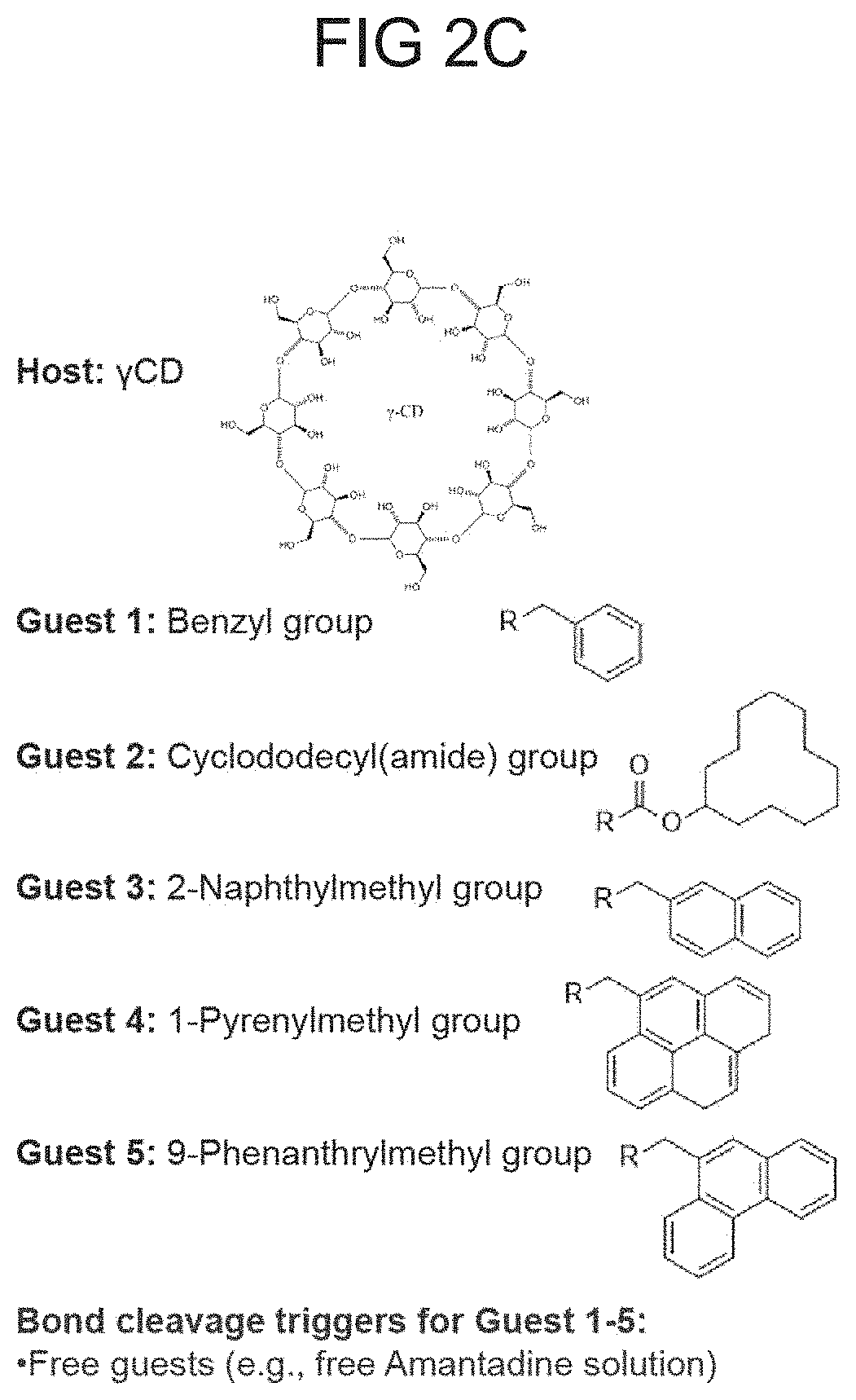Adhesive material with triggerable on-demand detachment
a technology of adhesive materials and triggers, applied in the direction of film/foil adhesives, unsaturated alcohol polymer adhesives, non-macromolecular adhesive additives, etc., can solve the problems of many limitations of existing tissue adhesives, difficult to form instant adhesion between wet surfaces, and difficult to meet the requirements of wet surface adhesion,
- Summary
- Abstract
- Description
- Claims
- Application Information
AI Technical Summary
Benefits of technology
Problems solved by technology
Method used
Image
Examples
Embodiment Construction
>[0032]The following definitions are useful for interpreting terms applied to features of the embodiments disclosed herein, and are meant only to define elements within the disclosure.
[0033]As used herein, the term “dry” when describing the adhesive material of the present invention refers to a material that is below the equilibrium moisture content of the material in use. As such, when a dry adhesive material of the present invention is placed in contact with a wet tissue or other wet or wetted (e.g., wetted by saline) surface to which it will adhere, the material will absorb fluid (e.g., water, saline, moisture, and physiological body fluids such as blood plasma, interstitial fluid, lymphatic fluid, cerebrospinal fluid, and gastrointestinal fluid) from the wet or wetted surface. Generally, a dry adhesive material will have less than about 50% by weight of liquid components based on total weight of the dry adhesive material.
[0034]As used herein, the term “absorb” when describing th...
PUM
| Property | Measurement | Unit |
|---|---|---|
| Time | aaaaa | aaaaa |
| Time | aaaaa | aaaaa |
| Pressure | aaaaa | aaaaa |
Abstract
Description
Claims
Application Information
 Login to View More
Login to View More - R&D
- Intellectual Property
- Life Sciences
- Materials
- Tech Scout
- Unparalleled Data Quality
- Higher Quality Content
- 60% Fewer Hallucinations
Browse by: Latest US Patents, China's latest patents, Technical Efficacy Thesaurus, Application Domain, Technology Topic, Popular Technical Reports.
© 2025 PatSnap. All rights reserved.Legal|Privacy policy|Modern Slavery Act Transparency Statement|Sitemap|About US| Contact US: help@patsnap.com



